What If a Job Could Reduce Violence?
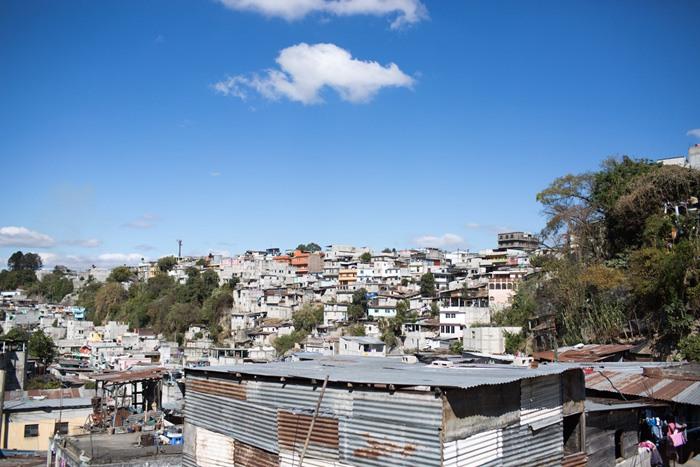

By Bethany Tran
Imagine a mile-wide ravine in the middle of a city. Concrete homes are stacked one on top of another, each covered by corrugated metal roofs. Up to 100,000 people live here. There are 10 barrios, or neighborhoods, and the gang presence is undeniable and strong.
This is the slum of La Limonada in Guatemala City, Guatemala. And it is a violent place. Now, imagine you live here.
As much as poverty is discussed in mainstream media, the violence behind it rarely is. In many impoverished areas, violence is in plain sight. It is complicated and intense. Upheaval is caused by so many factors and takes many faces: sexual violence, forced labor, gang activity, gender-based aggression. In places like La Limonada, many faces of violence exist, but perhaps the most obvious here is the gang violence. Gangs relocated south from Los Angeles during the last years of the 36-year Guatemalan civil war during the 1990s, when the instability of the country made it fertile for the gangs to take root and prosper.
Now imagine, as a 10-year old, you were left alone for hours each day and an easy target for the gangs. Your father is gone, and your mother is working two jobs to get food on the table. She has to lie about where you live in order to even find a place to work. She’s never around, and it’s not really her fault.
In the years since the war, gangs have been growing their number, often in the marginalized communities like La Limonada. The lack of a family structure leaves many children vulnerable, and the stigmas abound. People here often have little options. The culture outside views them as second-class citizens, and people who live within the confines of the slum often have to lie about their address to even get a job. Many youth join the gangs, because of the lack of opportunity for education past the sixth grade. (School is not free in the higher grades.)
This has become a cycle for several generations, each following in the footsteps of the prior. Gangs operate under a structure of violence: theft, murder and territory wars. Members are branded with gang tattoos in visible places to prevent them from getting a job outside the gangs.
Imagine now, your 10-year-old self, picked up off the street, pulled into the semblance of a family, tattooed on your face, and forced to perform unspeakable acts. You do it, because you just want to belong to someone. You get sucked deeper. And why not? So many others have, too.
Violence is a cycle, and a difficult one to break. As an outsider, it seems like such a simple option to leave the gangs. But the utter lack of opportunity outside gang life leaves most without options. Imagine yourself a little older. You want to leave, but what are your alternatives? With your history, your tattoos, your lack of education and skills, you may be more than a little trapped.
But what if change came from within the community? From someone who knew and understood? What if your 10-year-old self grew up and decided to be the one to stop that cycle of violence in your family.
Opportunity is key in communities like La Limonada: opportunity without judgment and assumptions; opportunity that allows for choices in a place where not many exist. Within these violent communities, people who truly understand the culture are critical to true change. If finding a job can take someone out of the gang life, and as a result, reduce the violence in the community, economic empowerment has a tremendous role to play. If a social entrepreneur, perhaps one with the same gang tattoos, can provide options, then economic development can have a direct correlation to the reduction of violence.
The more recent shift in development from charity to investment is an important one in the conversations of poverty alleviation and, in turn, the reduction of violence. Investing in local business owners who are empowering their community through job opportunities is critical to the improvement of the overall safety of people living in slums. It can also prevent the 10-year olds who feel like there may be no other option from joining the gangs in the first place. If they’re able to see that options exist, if parents can earn enough from one job to be home as a caretaker, if those kids aren’t forced to spend their days on the streets, then just maybe that cycle can be broken. The injection of opportunity in the form of business training, micro loans, and the simplicity of linking arms with people in poverty can bring about the change that’s needed. This is the hard part though. In a society where the expectation of the speed of a drive through in basically everything, the patience required for investment development strategies is one that is possibly the hardest.
Maybe poverty and violence, so inextricably linked, can be fought against through the dignity of a job. And then, one after another, the system that keeps people in poverty will begin to crumble from within.
Image credit: Em Grey
Bethany Tran is the founder and designer-in-chief at The Root Collective, a certified B Corporation that partners with small-scale artisans in rural and urban slum communities. Bethany is dedicated to attacking social issues through economic development and empowerment by uplifting communities from within. She is passionate about starting conversations that matter and the influence that each of us holds in the everyday decisions we make.
Airbnb Campaign Brings Attention to NYC Homeless
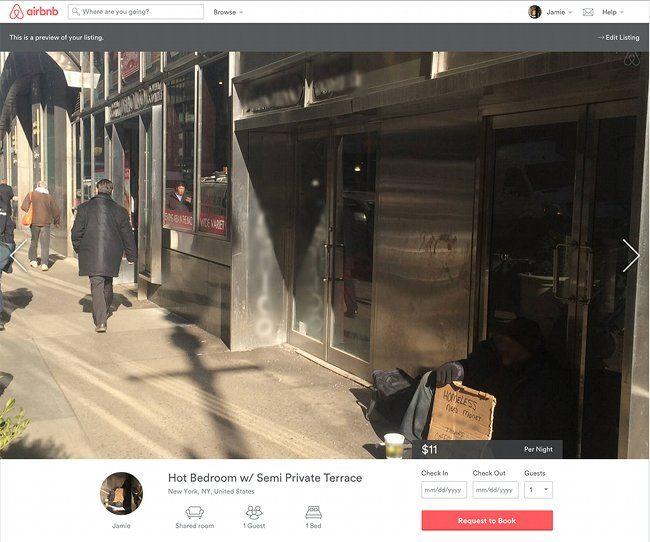

If you’re looking for a place to stay on your next trip to New York City, Airbnb user Jamie has a posting that sounds promising: a “Hot Bedroom w/ Semi-Private Terrace” for only $11. But on closer inspection of the post and accompanying photo, it appears Jamie’s “hot bedroom” is actually the sidewalk under the awning of a Manhattan office building, and Jamie is holding a cardboard sign that reads, “Homeless. Need Money.”
Is this a cruel joke? No, the listing says; these living conditions are the sad reality for New York City’s 60,000 homeless. The fake Airbnb posting is part of an innovative campaign to raise awareness about the Big Apple’s growing homeless population on the popular house-sharing platform.
Homeless Airbnb was dreamed up by New York City-based artist-activists Jamie Shin and Vito Catalani, the creative team behind “TipBombing,” which gathered large audiences to shower unsuspecting New York street musicians with tips. The pair wanted to shed light on the places the city’s homeless live and sleep, Shin and Catalani said in a press release, using the travel site that lets members rent out their homes to strangers.
“In the spirit of Airbnb, we reminded people that anywhere can be home,” a narrator said in a YouTube video about the campaign.
Other socially-minded mock Airbnb postings include “Amazing NYC 1BR w/bike service” (a homeless man’s bike and bike trailer) and “Modern Boho Open Space” (a man pushing a shopping cart down a sidewalk). And if an individual chooses to book one of these listings, the money – usually around $10 to $14 – goes to a New York City homeless shelter, Shin and Catalani said.
On any given night in the United States, there are 578,424 people without homes, according to a homeless population count conducted by cities in January 2014 and reported to the Department of Housing and Urban Development. About 15 percent of the homeless population – 84,291 people – are considered “chronically homeless.” Over 200,000 homeless people are in families, including children.
A lack of affordable housing is one of the main reasons people become homeless, and, coincidentally enough, one criticism of Airbnb has been that it exacerbates apartment scarcity in cities like New York and San Francisco. Detractors of the house-sharing site say that Airbnb incentivizes landlords to essentially turn their apartments into private hotels -- booking the space to one Airbnb guest after another, rather than renting it out long-term to a community member.
But a 2013 economic impact study, conducted by Airbnb and HR&A, revealed that 46 percent of the Airbnb hosts in San Francisco were renting out their entire home while they were out of town, and 44 percent were renting out a portion of their home (like a spare room) while they continued to live there. Only 10 percent of Airbnb hosts were property owners who don’t occupy the apartment at all and run it as a full-time Airbnb property. So, while the travel platform may have a small impact on the availability of housing, it’s likely not a significant contributor to the homeless problem in major U.S. cities.
Yet Shin and Catalani’s decision to use Airbnb as the avenue for their social-awareness campaign is still an interesting one. The people browsing through Airbnb listings in Manhattan are typically tourists – people with homes themselves and with the money and resources to vacation in one of the most expensive cities in the world. They’re visiting New York City to see the lights and bustle of Times Square, perhaps a show on Broadway, and maybe the Statue of Liberty or Empire State Building. They’re not coming to the Big Apple to think about where and how the city’s homeless population lives. But then a Homeless Airbnb listing pops up, and they’re forced to confront another side of New York and America.
Shin and Catalani are posting Homeless Airbnb sporadically, they said in a statement. If you can’t find one on Airbnb, the team encourages you to support their cause by donating directly to one of New York City’s homeless shelters, including New York Rescue Mission, Goddard Riverside, Common Ground and Jericho Project.
Image credit: Homeless Airbnb
BP Says 'Bye-Bye' to Conservative Group ALEC


BP is the latest company to leave the American Legislative Exchange Council, the conservative organization better known as ALEC. The organization bills itself as working to “advance limited government, free markets and federalism at the state level.” It does its work through a “nonpartisan public-private partnership” with state legislators and companies, the organization says.
The oil and gas company chose not to renew its ALEC membership, a BP spokesperson told the National Journal, which first reported on the company’s departure. BP told ALEC it was leaving the organization back in December.
"We continually assess our engagements with policy and advocacy organizations, and based on our most recent assessment, we have determined that we can effectively pursue policy matters of current interest to BP without renewing our membership in ALEC," the BP spokesperson said.
Over 100 companies have left ALEC in recent years
BP is among over 100 companies to leave ALEC in recent years. The companies that have left ALEC include Yahoo, Yelp, Facebook and eBay. Fellow oil-and-gas company Occidental Petroleum also left ALEC, as did defense technology company Northrop Grumman.
Google was perhaps the most dramatic and explicit about why it was leaving the organization. Back in September, over 50 organizations sent Google a letter asking the company to leave ALEC. Google didn’t respond to the letter, which asked the company to live up to its motto, “Don’t Be Evil,” by divesting from ALEC. However, about a week later Google chairman Eric Schmidt said during an NPR interview that the tech company’s ALEC membership "was some sort of mistake." He accused ALEC of "literally lying" about climate change.
Environmental groups are happy with BP's decision
Environmental groups have urged BP and other companies to leave ALEC, so they are rightfully excited by the news. That includes the Union of Concerned Scientists (UCS). Peter Frumhoff, director of science and policy for UCS, stated that he, along with the organization's president, Ken Kimmell, “asked senior BP officials to take this step last fall.”
Frumhoff added that the UCS is “gratified that they have listened and that a growing number of people and groups are calling on fossil fuel companies to end their support for ALEC.”
A database by Climate Accountability Institute shows that BP is among 90 companies responsible for extracting the fossil fuels that have caused about two-thirds of all industrial carbon emissions. More than 2.3 percent of all industrial carbon emissions come from BP’s products.
Greenpeace is another environmental organization happy about BP’s departure from ALEC: A blog post from the organization states that the departure of fossil fuel companies like BP and Occidental Petroleum “is a big blow to ALEC.”
Indeed it is a big blow to ALEC and makes one wonder what company will be next to leave the organization.
Image credit: Mike Mozart
South Africa Tests Drones to Thwart Rhino Poaching


Wildlife and nature reserves are major revenue-generating assets in South Africa and numerous other countries. Despite setbacks and an ongoing parade of problems, South Africa continues to be an innovator when it comes to wildlife and nature conservation. The nation is known for pioneering the application of new methods and use of new technology that is often adopted across the African continent and around the world.
Kruger National Park is the “crown jewel” in South Africa's 20-strong constellation of national parks, which are managed by SANParks (South Africa National Parks). The park spans over 1.9 million hectares (~4.7 million acres) and accommodates more than 1.4 million visitors annually. Kruger is also home to two of the largest wild populations of “big five” mammals -- the African elephant and the white and black rhinos -- which face particularly serious threats from poachers.
SANParks on March 19 announced it is evaluating the use of unmanned aerial vehicles (UAVs), aka drones, for anti-poaching efforts. UAVs are being tested in the field as one of “a suite of anti-poaching initiatives supported by the Rhino Protection Programme (RPP)” and made possible by funding from the Dutch and Swedish postcode lotteries and other donors, SANParks explains in a news release.
UAVs and night-flying helicopters enlisted to stamp out poaching
Testing of UAVs as part of SANParks' efforts to thwart rhino poaching in Kruger National Park is expected to last a full year. The project coincides with SANParks taking delivery of a new Airbus AS-350 B3e helicopter, its second, and this one with night-flying capability.Both the Airbus night-flying helicopter purchase and the UAV anti-poaching test project were made possible by a grant from the Howard G. Buffett Foundation, totaling $37.7 million South African rand (~US$3.18 million). Howard G. is the middle son of famed investor and billionaire Warren Buffet.
The grant from the Howard G. Buffet Foundation follows on an initial US$21.5 million grant made last year by the Dutch and Swedish postcode lotteries for SANParks to establish “air mobility capability” in Kruger. That grant enabled SANParks to purchase its first Airbus helicopter.
“In addition to increasing our current flight crew capability of flying at night, the helicopter is expected to improve our response time in dealing with contacts and other incidents in the Park,” SANParks' Board Chair Kuseni Dlamini commented. “We have just taken delivery of this second helicopter and we are commissioning it today (19 March 2015) to go into action in the fight against rhino poaching.“In accordance with the much needed aerial support to the anti-poaching teams around the clock, this helicopter will further assist in quick tactical response particularly at night where we have been lacking due to limited resources, therefore it is only proper to thank HGBF for bringing this much needed resource in our fight to curb poaching.”
Shining a light on South Africa's wild rhinos and anti-poaching efforts
In the foreword to SANParks' 2013/2014 annual report, South African minister of environmental affairs, Ms. B.E.E. Molewa, highlighted the persistent problems poaching poses for South African and world wildlife heritage. She also gave SANParks some much needed public recognition for its success in stamping out poaching in South Africa's national parks.
“SANParks and the country have been under tremendous pressure in the last six years through the on-going onslaught spearheaded by international syndicates against our rhino populations,” she stated.“I want to commend SANParks for the sterling work in attempts to combat poaching, in especially the Kruger National Park, under seriously trying conditions. The anti-poaching activities have ensured that in real terms the growth of poaching year on year continues to decline with the difference between 2012 and 2013 sitting at 42.6 percent while the previous year’s difference was at 68.7 percent.
“Though the numbers of poaching continue to grow even this reduction gives us hope that a better day is yet to come. Growth in arrests of suspected poachers and the ever increasingly stiffer sentences meted against convicted poachers are some of the measures which are hoped will pay dividends in the not so distant future.”
Minister Molewa also highlighted the crucial role poverty alleviation and education play in helping stamp out wildlife poaching. “Linked to the issue of challenges like rhino poaching amongst the myriad of social ills our country has to battle with is our work with communities, to bring hope, to educate and to build active constituencies,” she wrote. “I am proud to note that SANParks continues to improve its efforts to reach out to communities through its extensive list of initiatives.”
*Image credits: 1), 2) SANParks; 3) Prad's Press
CSR Report Review: For Volvo, 2014 Was All About Efficiency
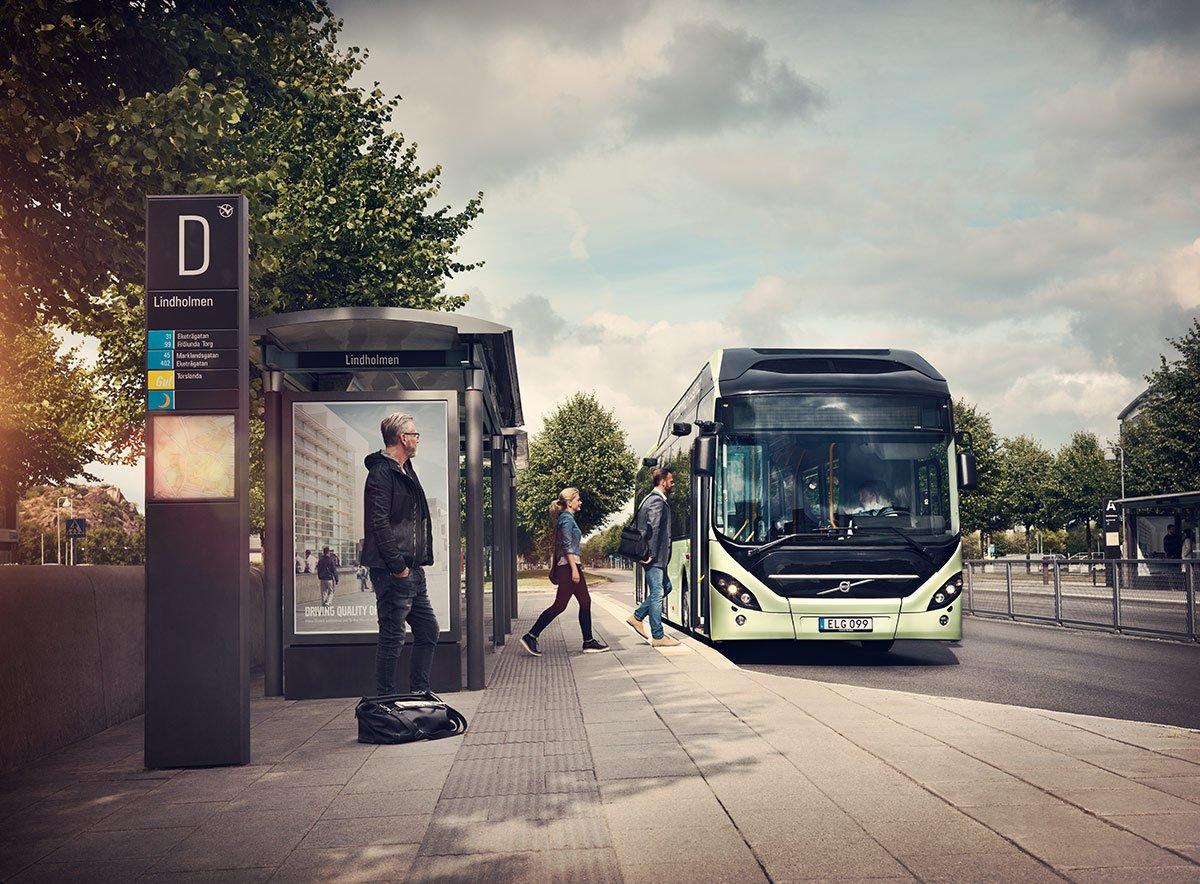

On this side of the pond, the Volvo Group's vehicles have long had appealed to suburbanites for their safety and durability cars. But the company also is a formidable manufacturer of trucks, buses and construction equipment. Volvo hit a rough patch in recent years, but is on the rebound, with sales approximately US$33 billion last year. And on the sustainability front, the company had a year of growth as well, especially when it came to efficiency—Volvo’s mantra for how it performed in 2014.
The company has long been forward thinking on alternative fuels, especially when it comes to methane and dimethyl ether (DME), the latter of which is a common pulp and paper byproduct in its home country of Sweden. But along with advancements in more efficient vehicles, the company itself has also become leaner and greener while launching new programs in its quest to become more of an engaged corporate citizen. To that end, the company just released its most recent sustainability report covering its performance for 2014.
First, let’s start with the company’s products, which have become more fuel efficient and innovative. Volvo launched a hybrid bus last fall, which has the potential to transform bus fleets in the long run. While hybrid and electric cars are sexier and score more press, more efficient buses could really make a difference environmentally and for municipalities, fiscally. The Volvo 7900 Electric Hybrid bus packs a punch and was a standout within the transportation sector: with 75 percent fuel savings, 75 percent less carbon emissions, running in electric mode 70 percent of the time and boasting a recharge that only takes six minutes, this bus could be a game changer. Well, if these buses enter more fleets beyond Stockholm, Edinburgh and Hamburg, Germany.
The company has also made improvements in its overall environmental performance. A member of the WWF’s Climate Savers Program since 2009, Volvo claims participation in the program was behind reducing its total carbon emissions by 40 million tons—or by 20 percent since 2009. A reporting company to CDP, the company also boosted its carbon disclosure score—up from 73 to 100. There is still room for improvement, but it nonetheless represents an ambitious year.
Capping off that year, what stakeholders should keenly observe this year is Volvo’s plan for more social engagement. The company’s professionals spent 2014 developing its “Moving Society Forward” program, which will focus on where its business interacts with society. The company will run a global traffic and workplace safety program, increase efforts on environmental sustainability and also develop an education and skills development agenda. The automaker’s work has taken Volvo employees everywhere from teaching traffic etiquette at schools in South Korea, India, Singapore and China—to launching vocational education programs in Africa and even in Sweden to combat local unemployment. The company continues to clean up its supply chain as well, with 94 percent of its suppliers ISO 14001 compliant and vendors assessed by their social performance, compliance with labor and human rights laws and workplace safety.
From the perspective of an automaker, being socially, environmentally and ethically responsible combine for a massive challenge, especially considering the climate impact cars, trucks and buses have on the planet. Volvo, however, is on the right path, and hopefully can surprise us more with even better and cleaner vehicles in the next several years.
Image credit: Volvo
Skidmore College Earns Chain of Custody Certification for Seafood

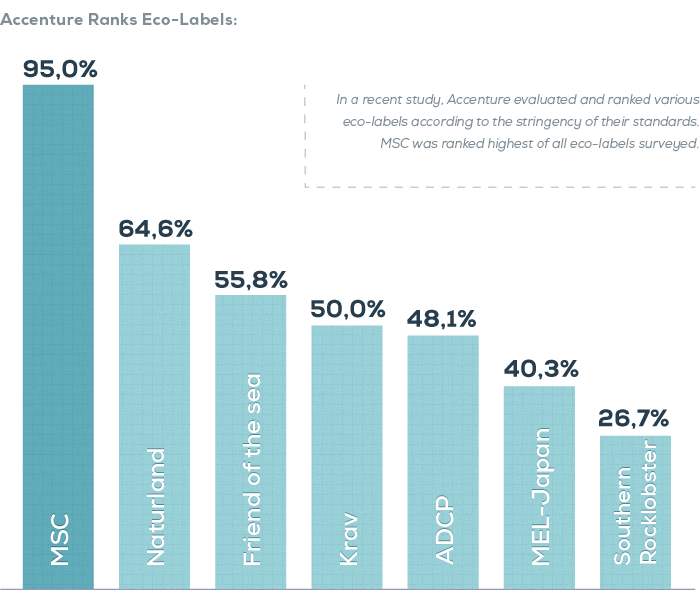
New York's Skidmore College is one of three universities in the state to earn Marine Stewardship Council (MSC) Chain of Custody Certification. Spanning the entire supply chain from fishery or fish farm to final sale, MSC's wild-caught seafood standard assures consumers that the seafood they are buying “comes from an independently-assessed and certified as environmentally sustainable fishery with full traceability.”
Students, faculty and staff at Skidmore College's bucolic campus in Saratoga Springs are now being served a variety of fresh, wild-caught seafood certified to have been sustainably caught, processed and distributed. At present, this includes MSC-certified haddock, pollock and cod. Skidmore's Dining Services intends to add other MSC-certified seafood to the dining hall's menu cycle.
Earning MSC chain of custody certification is the latest in Skidmore College's efforts to enhance overall sustainability, both on-campus and off. Based in upstate New York, the liberal arts college has installed an array of solar photovoltaic (PV) panels. No fewer than 29 buildings on Skidmore's campus are equipped with geothermal heating and cooling systems. And Skidmore's sustainability initiatives don't stop there.
Assuring sustainability across the seafood supply chain
MSC's Chain of Custody certification is a global, science-based assurance that seafood packaged with the blue MSC eco-label “can be traced back to a fishery that has been certified and well-managed,” the organization explains on its website. That assurance extends across the seafood supply chain to include processors and distributors.
Five core principles define the MSC sustainable seafood chain of custody standard:
- Purchasing from a certified supplier;
- Certified products are identifiable;
- Certified products are segregated;
- Traceable and volumes are recorded: and
- The organization has a management system.
Sustainability at Skidmore
Skidmore Dining Services introduced MSC-certified seafood at the college's fourth annual American Culinary Federation (ACF) Conference and Competition in January. Skidmore's culinary team won an ACF gold medal for a dish based on MSC-certified sea scallops.
Earning the MSC certification for wild-caught seafood is the latest accomplishment for Skidmore as it ramps up its efforts to enhance social and environmental sustainability. “Sustainability is a key theme in our dining facilities and we’re committed to reducing impact on the environment and increasing sustainable initiatives,” Mark Miller, director of Dining Services, was quoted in an MSC news release.
“MSC Chain of Custody certification is a sign of our commitment to sustainability. Skidmore’s Dining Services believes that by obtaining MSC certification, college students and staff are able to contribute to the health of the world’s oceans by choosing seafood that can be traced back to fisheries that have achieved the MSC standard for sustainable fishing.”
Skidmore Dining Services includes composting coffee-grounds, zero-sort recycling, efforts to repurpose fryer oil product as fuel, eliminating trays from the dining hall, and providing refillable water-bottle stations that have saved the equivalent of 171,816 bottles to date.
“We congratulate Skidmore College for their leadership and efforts to recognize and reward sustainable fishing practices through the achievement of MSC Chain of Custody certification,” said Geoff Bolan, U.S. program director for MSC. “Skidmore Dining’s commitment to offer seafood that has been certified to the global, science-based MSC standard, will help to ensure sustainable seafood for this and future generations.”
*Image credits: 1), MSC; 2) Accenutre, MSC; 3) Skidmore College
RECAP - Stories & Beer: The Business Case for Sustainable Cannabis

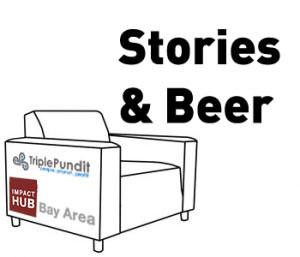
Tonight, we hosted our monthly "Stories & Beer" Fireside Chat at the HUB Bay Area. This month, TriplePundit Founder and Moderator Nick Aster conducted a brief conversation with our special guests about a topic of importance to the sustainable business community: cannabis.
As a newly legal industry, cannabis cultivation has been getting a lot of attention. With a myriad of legal challenges and lack of supply chain clarity, our current way of producing cannabis isn’t healthy for our planet, or us. Indoor cultivation accounts for an astonishing 5 to 8 percent of the electricity consumption in California, and no one knows the kinds of chemicals and pesticides that are being used.
Tonight's Fireside Chat at the Impact HUB San Francisco was a fascinating conversation on the cannabis industry through the lens of sustainability. Nick Aster moderated the talk between the audience, Flow Kana’s Michael Steinmetz and Emerald Growers’ Hezekiah Allen.
[REGISTER HERE]
Schedule
6:30 – 7:00 – beers and networking
7:00 – 8:00 – fireside chat and Q&A
8:00 – 8:30 – networking
Michael Steinmetz, Flow Kana
Is a graduate from Carnegie Mellon University, former NASA engineer and investment banker turned social entrepreneur. He grew his last company Le Zuc, and its non-profit arm, to more than 50 people across two countries. He’s the founder of Flow Kana, an SF based startup that aims to shift the conversation around cannabis and play an active role in creating the clean cannabis movement.
Hezekiah Allen, Emerald Growers
Hezekiah Allen was born and raised in Humboldt County. He studied Politics and Government at Pacific University. After university he returned to the North Coast to work as a consultant helping local residents increase water storage, implement conservation irrigation practices, and assisting local organizations with fundraising and strategic planning. In 2010 he was hired as the Executive Director of the Mattole Restoration Council. While with the MRC Allen was one of the first community leaders to call attention to the increasingly severe environmental impacts associated with illegal and unregulated marijuana cultivation.
Don't let it go! Iglo pushes frozen campaign to tackle food waste


Iglo Group, Europe’s largest frozen food company, has launched a coalition with leading waste reduction charity WRAP with the objective of reducing food waste across Europe.
The campaign called iFreeze will highlight the problem of European households wasting an average of €2602 of food every year, and then provide advice and tips on how increased use of both freezing and frozen food can help to reduce this waste and save money. The campaign is part of Iglo Group’s Forever Food Together (FFT) programme, launched in October 2014.
Birds Eye, Iglo Group’s UK brand, will be the first market to launch the campaign next month, supported by WRAP, Hotpoint, a leading brand of large home appliances, and the British Frozen Food Federation (BFFF). The Group’s other leading food brands Findus (in Italy) and Iglo (elsewhere in Europe) will launch education campaigns across 2015.
The Group will provide information through TV and print advertising, online tips and on-pack advice. Across 2015, the company plans to invest over €5m in iFreeze and will contribute to the Forever Food Together goal to inform consumers on at least one billion occasions by the end of 2020.
Andy Weston-Webb, UK MD, Iglo Group, commented: “Freezing, as a means of preservation, and frozen food both have the potential to play a key role in the fight against food waste and save consumers money.”
Alongside Iglo Group and WRAP, Hotpoint (owned by the Whirlpool Corporation), one of Europe’s leading manufacturers and distributors of large home appliances, will promote iFreeze in both the UK and other European markets at consumer events such as Ideal Home Show and Good Food Show.
Picture credit: © Yoyopiticutz | Dreamstime.com - Frozen Raspberrys Photo
Spotlight on Women Leaders in Sustainability - Kym Fawcett, Enerplus
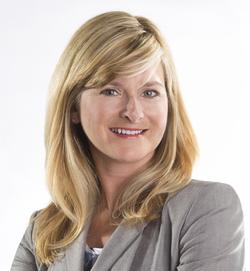

Submitted by David Connor
In the second installment of a three part series on women leaders in the spotlight, David Connor speaks with Kym Fawcett, Manager Safety & Social Responsibility at Enerplus Corporation.
Hi Kym. Thanks for taking the time to share your experiences with the CSRwire community. We’ll get straight into the questions to discover the highlights of your professional and particular Enerplus stories to inspire and guide the future women leaders of tomorrow…
Everybody has a different career history in the world of sustainability. What were the individual eureka moments that have steered your journey?
An early eureka moment was in the early ‘90s when I was working on a large scale, multi-year aquatic ecosystems study for the pulp and paper industry. The experience made me realize how critical collaboration is in our discipline and that collaboration needs to exist between both an organization’s internal and external stakeholders, regulators, academics and industry peers. Collaboration can result in solutions that are good for everyone, lead to the better or best result, and an increase in trust and acceptance.
Another eureka moment for me was that the environment, health and safety, regulatory and stakeholder engagement teams need to be structured so that sustainability benefits and everyone is on the same path. At Enerplus, we brought these teams together to complement or mirror what we know is a sustainable structure, one that supports external collaborative relationships.
Lastly, but a very important eureka moment for me, is that the art of influence is an essential skill for sustainability professionals.
If you had to write your CV as a Tweet how would you use the 140 characters?
Professional sustainability pusher. Twenty plus years developing/leading HSE&SD organizations & programs. Active volunteer and advocate. I push it at home, too.
Are there any particular books or authors that have stood out that have informed or inspired a course of action?
A few of the ones that quickly come to mind are:
-
Talent, Transformation & the Triple Bottom Line, by Andrew Savitz
-
Cradle to Cradle: Remaking the Way We Make Things, by William McDonough and Michael Braungart
-
Small is Beautiful: Economics as if People Mattered, by E.F. Schumacher
Have you had any mentors, and if so, what did you learn from these?
Yes. I have been very fortunate to have some great mentors and they taught me valuable lessons, including:
-
Be scrupulous in your attention to detail and commitment to accuracy;
-
Be able to substantiate statements, facts and numbers;
-
Always seek feedback, and do not shy away from receiving constructive feedback;
-
Learn from mistakes and bravely turn negative feedback into an opportunity for improvement;
-
Have patience, as things rarely happen as quickly or easily as you want;
-
Be a genuine and active listener; and
-
Do what scares you but will move the needle forward.
Which areas do you feel women leaders bring the most significant strengths to in accelerating the sustainable business movement?
I think women leaders have many strengths that can accelerate the sustainability movement. Three of these are:
-
Women are wired for collaboration. This is a critical skill requirement in the sustainability discipline, which is all about successfully connecting and threading together many pieces and audiences.
-
Women care not just that people think, they care about what they think. This information is essential for accelerating the sustainability journey and solving complex sustainability challenges and opportunities.
-
Multitasking. We juggle home and family, our work team, the team’s role within the company, our volunteer commitments and everything else that makes up the big picture, all while keeping a strong focus on the vision. Sometimes, each of those pieces have their own vision, making the juggling that much more interesting.
Where does your role sit in the wider CSR / sustainability blend at Enerplus?
I lead the team responsible for managing health and safety, environment and sustainability, regulatory affairs, and stakeholder and indigenous relations across North America. We call this the Safety & Social Responsibility team. We are like artists. We: sketch out the greater picture; bring the people together who want to help paint; foster their creative ideas and help them get their piece done; and then ensure the finished masterpiece is a vision of which everyone wants to be part.
Sustainability really is a mindset at Enerplus. I am fortunate to get to work every day with people from departments across the company who also really care about moving the company forward in our sustainability quest. We believe that by working together, we can be a great neighbour, and model what corporate sustainability should be and how an energy company can be.
What do you think makes Enerplus stand out from the growing crowd of sustainable businesses?
Being a safe and sustainable company is the most important thing we focus on. Keeping people and the environment from harm is paramount. We care about being one of the most responsible operators and a great neighbour, we care about being the best place to work and we care about being an attractive and profitable investment.
We often hear from new employees and visitors that they can feel that Enerplus is different than most other companies. They sense the excitement and commitment we have to sustainability. We want to work hard at it, we want to engage with others who share our passion and because of that, we will continually improve. We also want to help and mentor other companies who want to be sustainable.
Who are the ‘intrapreneurs’ you believe deserve praise for their often unseen impact?
I think it is often the quieter people, the ones who have great and innovative ideas but have not yet found the voice to comfortably and confidently share them. I believe leaders need to work at finding those individuals, helping them find their voice and encouraging them to share their ideas.
What one piece of advice would you offer women wanting to make a career in EHS / sustainability?
Easy: go in with your eyes wide open. It is a fascinating career and you have many opportunities to make a difference and touch a lot of people both inside and outside your organization. Be tenacious, stay flexible, listen and keep your eye on the vision.
Kym Fawcett is a member of NAEM's Board of Directors and is on the organizing committee for NAEM’s Women’s EHS & Sustainability Leadership Roundtable, taking place April 14-16 in San Antonio. To network and learn from leaders like her, please visit http://womensleadership.naem.org/index.php
Bonne Nouvelle! French Law Mandates Green Roofs, Solar Panels


In case you need a reason to say “vive la France,” the French parliament just gave you one.
Last week, the governing body passed a law that requires new buildings in commercial zones to be partially covered in either plants or solar panels, Agence France-Presse reported.
French environmental activists urged the government to pass a law requiring new buildings to cover their entire roofs with plants. However, the government managed to work with the activists, who support the new law.
France lags behind in PV capacity
France lags behind other European countries when it comes to solar deployment. France only installed 613 megawatts of solar photovoltaics in 2013 amongst countries that installed at least 1 gigawatt in previous years, a 2014 report by the European Photovoltaic Industry Association (EPIA) found. In 2011, France installed 1.77 gigawatts.
Solar PV capacity in France has increased much more slowly than in Germany, Spain or Italy, Reuters reported in November. In June, France had 5,095 megawatts of PV capacity, accounting for 1 percent of the energy consumption in the first half of 2014. Neighboring Germany had almost 37,000 MW.
Green roofs and PV panels reduce urban heat island
Urban regions are warmer than surrounding rural areas. For example, Fresno, a city in central California, is at least 4 to 5 degrees Fahrenheit warmer than its surrounding rural areas. Four or 5 degrees may seem like a minuscule difference, but 104 degrees Fahrenheit as opposed to 100 degrees is more intolerable.
Why are urban areas warmer? Buildings and roads have replaced open land and vegetation, the U.S. Environmental Protection Agency (EPA) explains. That means that surfaces which were moist and permeable become dry and impermeable. This causes urban regions to become warmer, forming an island of higher temperatures -- known as an urban heat island.
Heat islands cause a number of negative impacts, according to the EPA, including:
- Increased energy consumption to compensate for higher summer temperatures
- Increased emissions of air pollutants and greenhouse gases from power plants
- Impaired water quality because hot pavement and rooftop surfaces transfer excess heat to stormwater that drains into storm sewers and increases water temperatures as it is released into streams, rivers, ponds and lakes
One way to reduce the urban heat island effect is by installing green roofs. Although a green roof is costlier than a conventional roof, it will save about $200,000 over its lifetime, a Michigan State University research team found. Almost two-thirds of the savings come from decreased energy needs.
Green roofs are not the only way to cool an urban heat island. A 2014 French study discovered that solar panels also reduce the effect. In other words, solar panels provide energy that is good for the environment and provide environmental benefits by reducing the urban heat island effect. Très bon!
Image credit: David Werner
